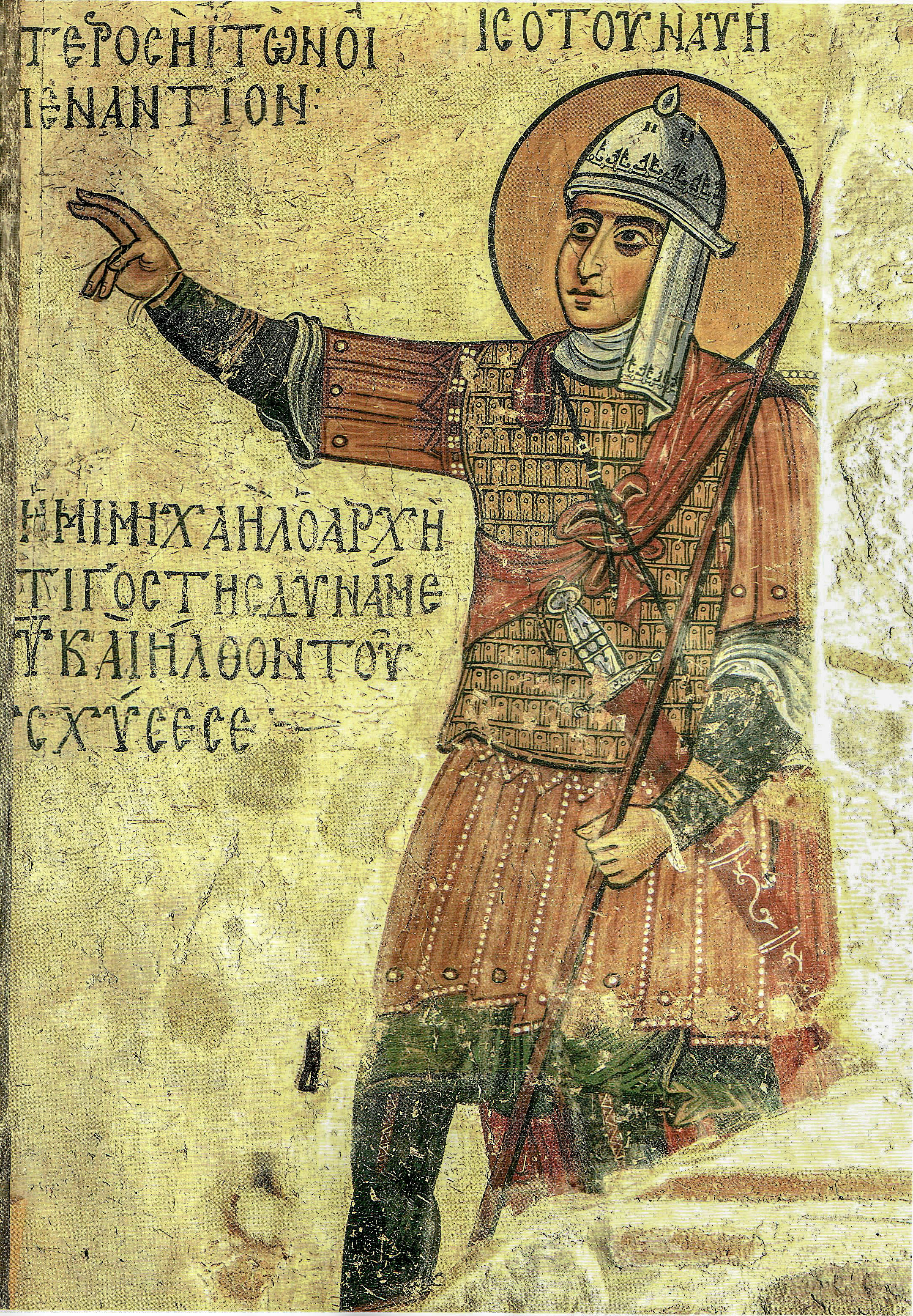
Create an Amazon Wedding Registry
Fresco of Joshua from Hosios Loukas (St. Lucas) monastery in Boeotia, Greece, 12th-13th century.



The monastery of Osios Loukas is situated at a scenic site on the slopes of Mount Helicon. It was founded in the early 10th century by the hermit St. Lukas, whose relics are kept in the monastery to this day. The hermit (who died on 7 February 953) was famous for having predicted the conquest of Crete by Emperor Romanos. Although he likely referred to Romanos I, the island was actually reconquered by Nicephorus Phocas under Romanos II. It is believed that it was during the latter's reign (959-963) that the Church of the Theotokos (Panagia) was constructed.
Osios Loukas is the largest of three monasteries surviving from the Middle Byzantine period in Greece. It differs from the Daphnion and Nea Moni in that it is dedicated to a single military saint. St. Lukas's prophecy about the reconquest of Crete is commemorated by the image of Joshua on the exterior wall of the Panagia church: Joshua was considered a model "warrior of the faith", whose help was especially effective in the wars waged against the Arabs.